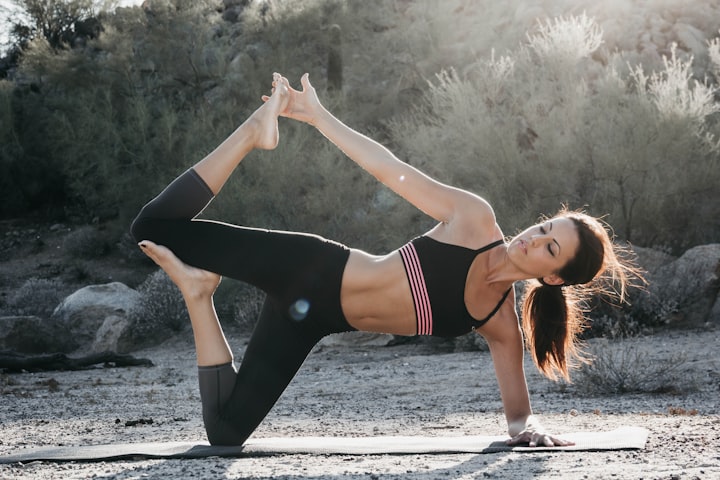
Yoga can be a beneficial practice for managing diabetes by improving insulin sensitivity, reducing stress, and promoting overall well-being. Here are some yoga poses and practices that may help in reducing diabetes symptoms:
1. Sukhasana (Easy Pose)

This seated pose helps calm the mind and reduce stress, which can positively impact blood sugar levels.
2. Ardha Matsyendrasana (Half Spinal Twist)

This twist stimulates the pancreas, which is responsible for insulin production. It also improves digestion and promotes detoxification.
3. Dhanurasana (Bow Pose)

This pose massages the abdominal organs, including the pancreas, and helps improve digestion and blood circulation.
4. Setu Bandhasana (Bridge Pose)

This pose stimulates the abdominal organs, including the pancreas, and helps regulate blood sugar levels.
5. Balasana (Child's Pose)

This resting pose promotes relaxation, reduces stress, and helps calm the mind.
6. Pranayama (Breathing exercises)

Practices like deep breathing, alternate nostril breathing, and Kapalabhati (skull-shining breath) can help reduce stress, improve oxygenation, and enhance insulin sensitivity.
7. Meditation

Regular meditation can reduce stress, improve mental well-being, and promote self-awareness, which can be beneficial for managing diabetes.
Remember, it's essential to consult with your healthcare provider before starting any new exercise or yoga routine, especially if you have any existing medical conditions like diabetes. They can provide personalized advice and guidance based on your specific needs and health status.
In addition to yoga, maintaining a healthy diet, regular exercise, and proper medication (if prescribed) are vital for effectively managing diabetes. It's a holistic approach that combines various lifestyle factors to achieve the best results.
1. Consult your healthcare professional: Before starting any new exercise or yoga routine, it's important to consult with your healthcare professional, especially if you have any existing health conditions or concerns.
2. Choose the right yoga style: Look for yoga styles that emphasize gentle movements, stretching, and relaxation, such as Hatha, Yin, or Restorative yoga. These styles can be particularly beneficial for individuals with diabetes.
3. Practice regularly: Consistency is key. Aim to practice yoga for at least 30 minutes, three to five times a week. Regular practice can help improve insulin sensitivity and overall blood sugar control.
4. Focus on stress reduction: Stress can negatively impact blood sugar levels. Yoga helps reduce stress through deep breathing, relaxation techniques, and mindfulness. Incorporate stress-reducing practices like deep breathing exercises, meditation, and guided imagery into your yoga routine.
5. Include asanas for diabetes management: Certain yoga poses can help stimulate abdominal organs, improve digestion, and promote better blood circulation. Poses like Bhujangasana (Cobra pose), Dhanurasana (Bow pose), Paschimottanasana (Seated Forward Bend), and Ardha Matsyendrasana (Half Spinal Twist) can be beneficial.
6. Prioritize balance and flexibility: Yoga can improve balance, flexibility, and coordination, reducing the risk of falls and injuries. Include standing poses like Vrikshasana (Tree pose) and Tadasana (Mountain pose) to improve balance and lower-body strength.
7. Pay attention to your breath: Deep, mindful breathing techniques, such as diaphragmatic breathing or alternate nostril breathing, can help activate the relaxation response and regulate blood sugar levels.
8. Stay hydrated: Proper hydration is important for overall health and diabetes management. Drink plenty of water before, during, and after your yoga practice to stay hydrated.
9. Monitor blood sugar levels: Regularly monitor your blood sugar levels before and after your yoga sessions to understand how your body responds to the practice. This information can help you adjust your routine as needed.
10. Combine yoga with a healthy lifestyle: While yoga can be beneficial, it should be part of a holistic approach to managing type 2 diabetes. Combine your yoga practice with a balanced diet, regular exercise, medication management (as prescribed by your healthcare professional), and other healthy lifestyle habits.
Remember, yoga is a complementary approach to managing type 2 diabetes, and it should not replace any medical treatment or advice provided by your healthcare professional.






Comments (1)
great information.Thanks for sharing!